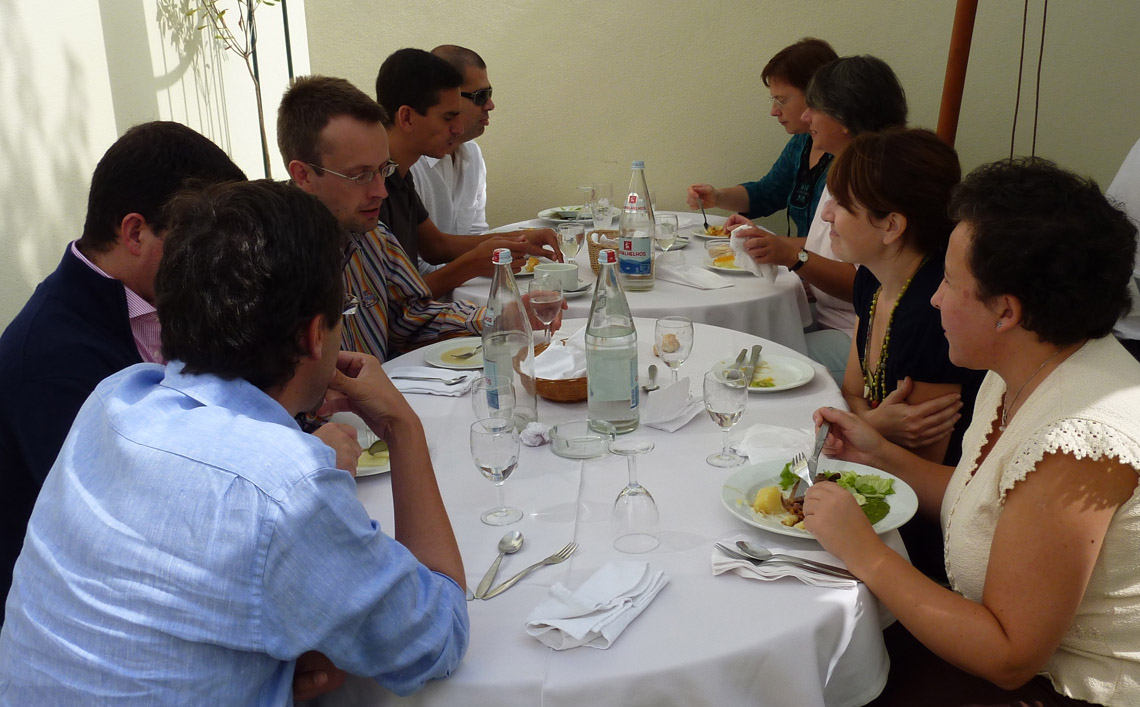5th Local Chapter meeting in Portugal

The 5th Iberian chapter meeting – the first to be held in Portugal – took place on 2 October at the Institute for Molecular and Cell Biology (IBMC) in Porto. Participants were largely EMBL Portuguese alumni as well as IBMC staff, who gathered to listen to talks on neurodegeneration, kinetochore-microtubule interactions and RNAi-based dissection of innate immune responses.
IBMC Director Claudio Sunkel, who is also the EMBL Council delegate and the EMBC Vice President, opened the meeting with an introduction to the IBMC and to EMBL’s role in European science.
Following EMBL group leader Anne-Claude Gavin’s honorary lecture on biochemical approaches to biomolecular networks, the alumni enjoyed a tour of Porto and a wine-tasting.
The whole event was organised by Paula Sampaio, Head of IBMC’s Advanced Light Microscopy Facility, with help from Paula Sebastiao, Assistant Professor at the Escola Superior de Tecnologia do Mar de Peniche.
Paula Sampaio, who is often seen walking through the corridors of the IBMC with a screwdriver, was a visiting scientist in the CBB unit’s Gonzalez Group from 1995 to 2001. While responsible for maintaining the first Leica confocal microscope at EMBL and teaching scientists how to use it, Paula was also running the fledgeling IBMC’s server on her laptop! “EMBL gave me an overview of how a big institute works, and this has been very useful to help to improve IBMC organisation,” she says. “Besides inspiring me to build the microscopy unit at IBMC, it was a great experience scientifically.”
It was her interest in technical equipment – microscopes in particular – which led her to set up the IBMC’s open access Advanced Light Microscopy Facility in 2004, where they now have 100 users a year. Paula is also a Senior Scientist in the lab of IBMC Director Claudio Sunkel. “It has been very important for me to divide my time between services and research”, she says. “I don’t think you can really understand and appreciate the requirements of the facility users, and push forward the need for microscopes, if you’re not doing research”.